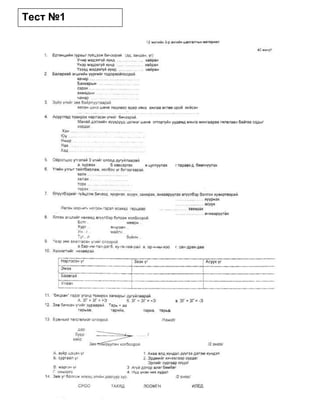1 of 2
Download to read offline


Ad
Recommended
Chap. 2. economic rational of multinational trade & business
Chap. 2. economic rational of multinational trade & businessScarlett Voughn
╠²
This document discusses theories of international trade and multinational business activity. It covers the theory of comparative advantage, which states that trade benefits both countries based on their relative rather than absolute costs of production. It also discusses factors that determine a country's comparative advantages, barriers to trade like tariffs and quotas, efforts to reduce trade barriers through organizations like GATT and WTO, and the role of multinational corporations in global trade and investment.11 international finance introduction
11 international finance introductionjavedkhan4013
╠²
International finance deals with international trade, exchange rates, foreign investment, and the global financial system. It applies economic theories like absolute advantage, comparative advantage, and factor endowments to understand patterns of international trade. Theories suggest countries will export goods intensive in their relatively abundant factors and import goods intensive in scarce factors. However, empirical tests found some contradictions, like the US exporting more labor intensive goods. Other theories like overlapping product ranges and product lifecycles provide alternative frameworks to analyze trade patterns.Instruments Of Trade Policy
Instruments Of Trade PolicyPANGO
╠²
Political Economy Of International Trade discusses various trade policies used by countries and their effects. It notes that rich nations subsidize their agricultural sectors, creating surpluses and depressing global prices. This costs developing nations an estimated $50 billion annually in lost export revenue. The document also examines instruments of trade policy like tariffs, quotas, localization requirements, and anti-dumping policies. It outlines arguments for and against trade interventions and discusses the development of the World Trade Organization to liberalize and regulate global commerce.Absolute and comparative advantage
Absolute and comparative advantageGene Hayward
╠²
The document discusses the concepts of absolute and comparative advantage as they relate to international trade. It uses a hypothetical example of two countries, Country A and Country B, that each produce two goods: cloth and wine. It calculates the opportunity costs of producing each good for each country. Country B has an absolute advantage in cloth production and Country A has an absolute advantage in wine production. However, when considering comparative advantage based on opportunity costs, Country B has a comparative advantage in cloth while Country A has a comparative advantage in wine. Specializing and trading allows both countries to consume beyond their production possibilities. An acceptable terms of trade is derived that benefits both countries.Absolute Advantage Theory
Absolute Advantage Theoryzeddem
╠²
The document summarizes David Ricardo's theory of comparative advantage from 1817. It explains that Ricardo formalized the idea that countries can benefit from trade even if one country is more productive in all areas. Ricardo used a numerical example to show that if countries specialize in their comparative advantage goods, where their productivity is relatively higher, then total production can increase. The theory assumes differences in productivity across countries and industries and argues countries should allocate resources to comparative advantage industries to maximize global output through specialization and trade.Comparative vs absolute advantage
Comparative vs absolute advantageDevraj Chamlagai
╠²
According to the document, the theories of absolute advantage and comparative advantage are discussed. Absolute advantage refers to a country's ability to produce more of a good than another country with the same resources. Comparative advantage refers to a country's ability to produce a good at a lower opportunity cost than other countries. It is beneficial for countries to specialize in goods they have a comparative advantage in producing and to trade for other goods, as this allows gains from specialization and trade for all countries.